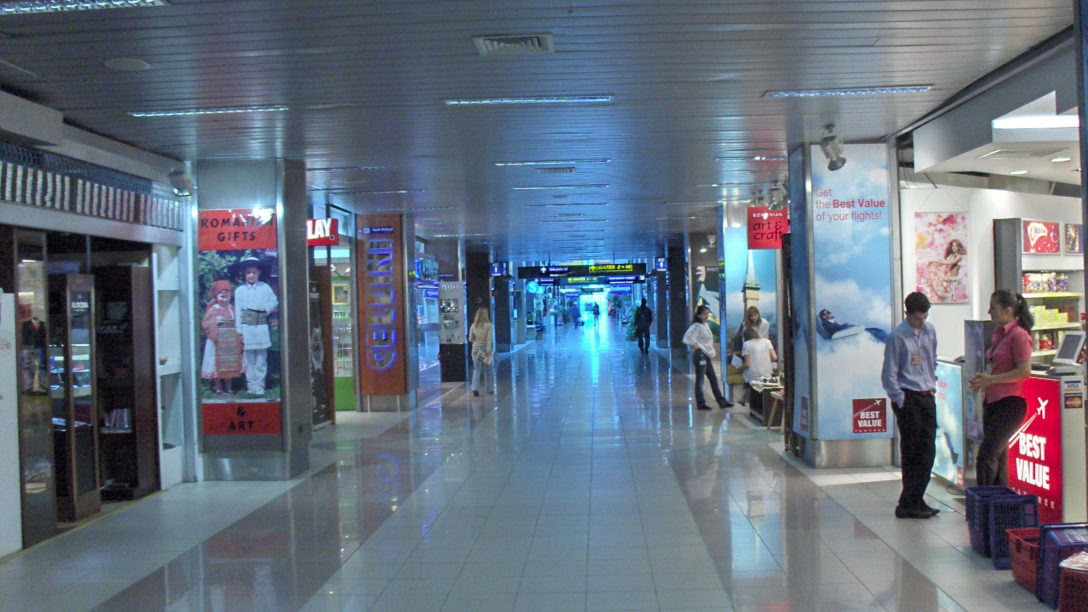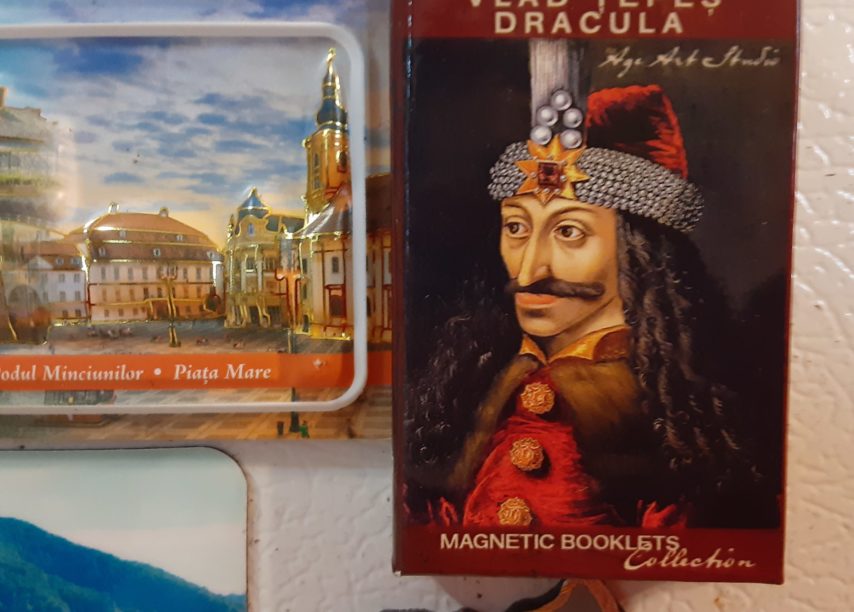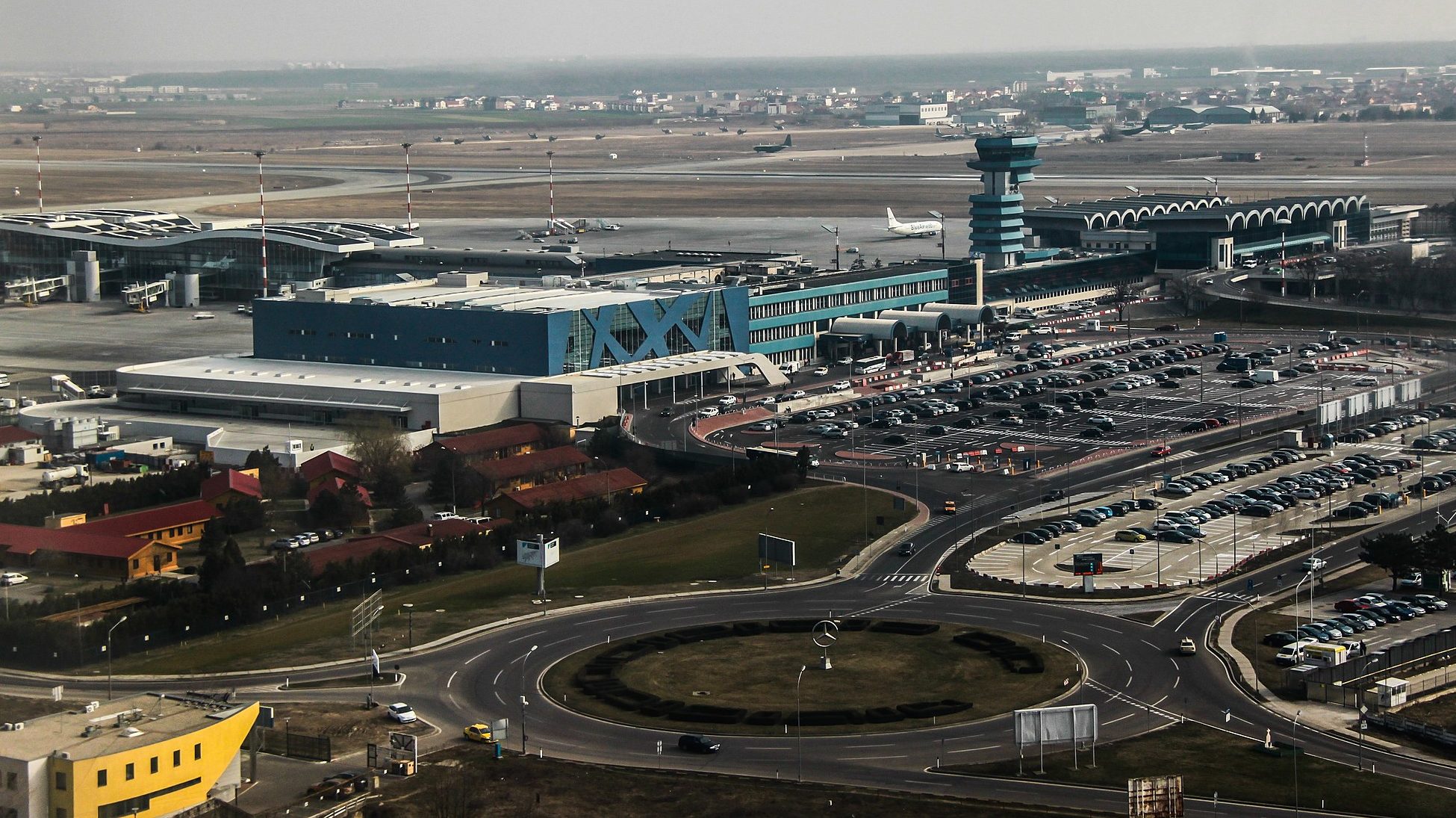The faint aroma of cigarette smoke is the first thing that hits you entering the OTP airport in Bucharest. There is not a cigarette in sight; smoking is prohibited in public buildings in the European Union. Yet the smell is unmistakable, seeping in from the smokers’ lounges in the departure area, from offices, from the open windows where airport workers sneak a last smoke before their shift. I am no friend of tobacco, but no matter how jetlagged and exhausted, the smell always reminds me that I am home.
Otopeni is not big, not fancy, not a regional hub. Above all, it’s a final destination. In 2004 it was renamed The Henri Coandă International Airport, after a Romanian flight pioneer, but most locals still call it Otopeni. A few travelers who land here are foreigners on business trips, with a handful of adventurous tourists, but the vast majority are Romanians returning home. They share an air of collective familiarity as they bustle aboard the shuttles to the terminal building, smiling and looking around happily, striking up conversations with complete strangers, or shouting excitedly into their phones. The chaotic line at passport control is part of a cultural rite of passage that prepares you for all the big and small frustrations to come. It is hardly a line at all, more like an amorphous mass of people all trying to jostle their way to the front. But everyone understands that in this Darwinian survival of the cheekiest, we’ll all get through eventually.
The Arrivals terminal of OTP makes no attempt to please the travelers, no effort to dazzle them with the delights that await beyond the doors of the airport. It’s a no-frills wonder of minimalism and pragmatic organization: three or four passport control booths, a lonely currency exchange office, three luggage carousels, one restroom. The walls bear no glamorous photographs of the iconic monuments of Bucharest, no Transylvanian castles, no tantalizing close-ups of foods in hip restaurants. It’s as if the airport is informing its visitors: “If you are here, it must be because you want to be here. You presumably already know that all these things are within your reach, now that you’re in the country. And, if you really want to, you can figure out how to explore such things on your own, there is no reason to force the point.”
After the ritualic Bine aţi venit acasă! (welcome home) with which the border guards invariably welcome travelers with Romanian-sounding names, it’s time to walk the long corridor towards the baggage claim hall, and wait alongside the other bleary-eyed travelers for our suitcases to appear on the conveyor belt. Once everything is accounted for, the sliding doors towards the exit open up and the airport spits us out into the narrow arrival hall full of eagerly awaiting families and a few predatory taxi drivers, smiling and fluent in English, ready to triple-charge naive Westerners for a ride downtown. Welcome to Bucharest!
By contrast, the OTP Departures terminal is a manicured, bright affair, with wide spaces, rows of chairs, and multiple lounges and cafes where passengers can idle the pre-boarding hours away. Its entire atmosphere is infused with the promise of adventure. Traveling abroad maintains a halo of privilege from those bygone days when few people could do so, and Romanians still take flying seriously. They dress up for the occasion, and show up at OTP determined to experience each moment of the trip to the maximum: the women, too beautiful in their impossibly high heels, the men too loud in their leather jackets, clutching expensive phones, everyone always ready for one more coffee, one more snack, one more purchase before take-off.
 public domain via Wikimedia Commons
public domain via Wikimedia CommonsBy the time you reach OTP to depart, you are almost already abroad and you get to pay for it, literally; the price of food and drink increases fourfold the moment you set foot inside the airport. It is a special place, an in-between realm separating everyday life from the as-yet-untasted thrill of the journey abroad (usually to Western Europe): the smell of French perfume, of croissants baked to perfection and of hot, luscious coffee fills the air. People smile, chat, and take selfies as they wait to board, the energy is palpable. The restaurants in the boarding area are separated by large transparent cubes with seating inside—the smoking lounges. Inside, in a thick, opaque haze, smokers are getting their last nicotine fix over a small cafeluţă before boarding. Luxury stores and duty-free shops line the walkways, selling a combination of Romanian and Western fashion, and Romanian souvenirs for the business travelers in need of a local memento to offer friends on a global adventure: local fashion, bottles of apricot or plum brandy, fragile, intricately decorated Easter eggs, colorful painted pottery, generic Dracula-themed fridge magnets. King Vlad the Impaler (aka Vlad Dracul), is revered by most Romanians as a fierce defender of the realm and fighter against corruption. At Otopeni, his image is merely another commodified reminder of Transylvania’s global brand: he inspired Bram Stoker’s 1897 Gothic horror novel and the subsequent stardom of its protagonist, the blood-thirsty, garlic-fearing vampire of the Carpathians.
 fridge of the author
fridge of the authorMy airport has a checkered, even a terrible past. It was first developed as a German military base between 1940 and 1944, at the time when Romania was an ally of Nazi Germany. The Romanian military operated it exclusively until 1965, when it became a commercial airport for domestic and international flights. And just three decades ago, in 1989, OTP was the scene of a tragic episode in the only violent anticommunist revolution in Eastern Europe. In the morning of December 23, 1989, in full leadership chaos, one day after the army had officially sided with the revolutionaries and the former dictator was arrested, three trucks full of students at a military school from a neighboring town were sent to Bucharest to boost the airport defenses.
On the national television channel, which had been seized by the revolutionaries, rumors warned of a group of terrorists who were trying to take over the airport. When reinforcements arrived at Otopeni, chaos ensued. The soldiers inside the airport started shooting at the trucks, believing the terrorists were inside. The military students in the trucks shot back, thinking that the terrorists must have already captured the airport. More than forty people died in the resulting bloodbath, most of them in their early twenties, or even younger. No terrorists were ever captured in Romania after the Revolution; no evidence ever emerged to suggest that the bloodshed was anything more than tragic error, one of the many unsolved mysteries of that troubled winter. To this day, the only thing reminding passers-by of the violence that day is a marble monument in memory of the dead, tucked away somewhere in the park near the main terminal.
Since 1989, the town of Otopeni, where the airport is located, has transformed beyond recognition, ballooning from a sleepy, minor satellite city into full-fledged suburb of Bucharest. In less than an hour, depending on traffic, one can enter the city crossing the long stretch of gaudy urban sprawl in which new gated communities rub shoulders with derelict car washes, home improvement centers, old communist-era blocks of flats, an enormous Ikea, and multiple shopping centers glimmering with the lights and goods of the endless, mindless consumerist paradise that Romanians craved for 50 years during communism.
The airport has grown too, adding new wings and floors, new runways and office spaces that mushroomed in haphazard fashion around the 1970s outline of the main terminal. Every time I travel through it, I experience a slight confusion, as I readjust my bearings to the freshly altered landscape.
Its checkered past aside, OTP remains a symbol of mobility, evoking prospects of a summer or winter vacation in a Western European capital, visits to family or friends living abroad, or of educational or professional opportunities that older generations were denied. For expats like myself, it has become an indispensable part of the new infrastructure of mobility that makes our global, disjointed lives possible: the destination that brings us back to parents and siblings, to friends and familiar landscapes, tastes, scents and sounds.
As the 2020 pandemic forced the whole world to cancel flights and shut down airports, I thought of all those Romanian travelers who, during the Cold War, had passed through Otopeni not knowing when, or if, they might walk its corridors again. In many ways, we are all going through a similar experience now. National borders suddenly matter again, government-mandated lockdowns do not care about vacation plans or missed anniversaries or about sick or dying parents. The pandemic reminds us every day of the falsity of the illusion that we could transcend geography at the swipe of a credit card. Even so, I hope soon to enter the OTP Arrivals terminal, its faint aroma of tobacco smoke welcoming me back, if only through a mask.






